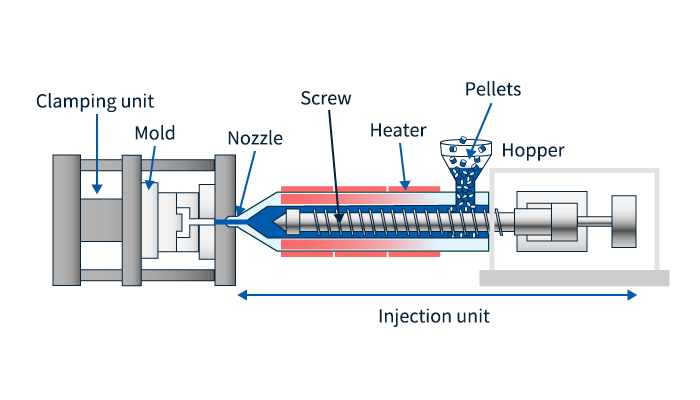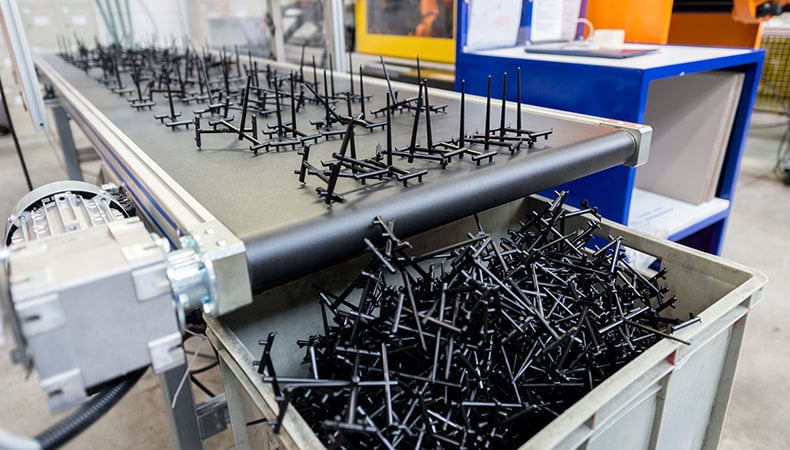The Impact of Plastic Injection Molding on Reducing Manufacturing Prices and Waste
The Impact of Plastic Injection Molding on Reducing Manufacturing Prices and Waste
Blog Article
The Future of Plastic Injection Molding: Fads and Developments to See
As the plastic injection molding industry develops, several crucial trends are emerging that guarantee to reshape its landscape. Automation and clever production strategies are set to boost productivity, while the change towards sustainable materials mirrors a growing environmental awareness.
Automation and Smart Production
As the plastic shot molding industry advances, automation and smart production are taking spotlight, reinventing production processes - Plastic Injection Molding. The assimilation of advanced innovations such as robotics, IoT (Web of Things), and synthetic knowledge is enabling suppliers to improve efficiency, lower operational costs, and boost product quality. Automated systems improve workflows, lessening manual intervention and enhancing throughput, which is crucial in satisfying the increasing demand for fast manufacturing cycles
Smart producing technologies promote real-time surveillance and information evaluation, enabling firms to enhance device performance and forecast upkeep needs. This aggressive strategy not just reduces downtime but additionally expands the life-span of tools. Moreover, the usage of collective robotics, or cobots, improves the adaptability of assembly line, enabling workers and devices to run side by side securely and efficiently.
The adoption of automation in plastic injection molding is not simply a trend however a tactical necessary for services aiming to remain competitive in a worldwide market. By taking advantage of these modern technologies, makers can attain higher accuracy, lower waste, and adapt quickly to altering consumer needs, positioning themselves for lasting development in an increasingly automated future.
Lasting Products and Practices
The push in the direction of automation and wise manufacturing has actually led the way for a greater focus on lasting materials and practices within the plastic injection molding market. Companies are progressively looking for environmentally friendly alternatives to typical petroleum-based plastics, causing the adoption of recycled and bio-based materials. These sustainable products not only lower ecological influence but likewise straighten with consumer need for greener items.

In addition, collaboration in between manufacturers, material vendors, and ecological companies is fostering advancement in the growth of sustainable products that satisfy performance requirements without endangering quality. As laws around plastic usage become stricter, the industry is positioned to adjust by embracing these sustainable approaches, making certain lasting stability and minimizing reliance on non-renewable sources. The combination of sustainability into plastic shot molding is not merely a fad; it is becoming a necessary part of company responsibility and functional quality.
Developments in 3D Printing
Recent developments in 3D printing modern technology are significantly transforming the landscape of plastic shot molding. Impossible or once difficult to attain through conventional techniques, the integration of additive manufacturing procedures enables for the quick prototyping of complicated straight from the source geometries that were. This ability not just speeds up product development cycles but also reduces material waste, aligning with the expanding need for lasting manufacturing methods
Furthermore, the introduction of hybrid production techniques, which incorporate 3D printing and shot molding, provides suppliers the ability to develop intricate designs while preserving the performance of automation. This technique allows the production of tailored components customized to specific customer requirements without compromising the speed and scalability that injection molding supplies.
In addition, developments in materials, such as high-performance polymers and composites particularly created for 3D printing, are enhancing the functional capabilities of printed elements. These products can stand up to higher stress and show improved thermal residential properties, making them appropriate for even more demanding applications.
As read here 3D printing proceeds to evolve, its combination into plastic shot molding processes promises to enhance efficiency, minimize costs, and foster technology in item design, placing suppliers to better fulfill the difficulties of an open market.
Data Analytics and IoT Assimilation
Data analytics and the assimilation of the Web of Points (IoT) are reinventing plastic injection molding by supplying producers with extraordinary insights right into their operations. By leveraging real-time information gathered from interconnected machines and sensing units, producers can keep track of efficiency metrics, identify ineffectiveness, and maximize production procedures. This data-driven method facilitates anticipating maintenance, lowering downtime and expanding equipment life-span.
Additionally, IoT assimilation enables for boosted high quality control. By continuously tracking variables such as temperature, cycle, and pressure times, makers can quickly find inconsistencies from developed criteria and make adjustments in real time. This not just enhances product consistency yet additionally lowers waste and scrap prices.
The blend of information analytics and IoT modern technologies additionally equips makers to take on even more nimble production strategies. With access to detailed data analytics, companies can react to market demands with higher flexibility, adjusting production routines and arrangements as required. This flexibility is essential in a rapidly changing production landscape.

Customization and Design Flexibility
How can modification and design adaptability improve the competition of plastic injection molding? Customization enables manufacturers to fulfill certain client demands, accommodating one-of-a-kind dimensions, forms, and functionalities that check my site typical products might not meet.
Advancements in style technologies, such as computer-aided layout (CAD) and rapid prototyping, more bolster this pattern. These devices enable designers to produce detailed patterns and complex geometries, which can be perfectly integrated right into the manufacturing process. Because of this, suppliers can react promptly to changing customer choices and market needs.
Moreover, the application of modular tooling systems boosts design versatility, permitting quicker changes between different product styles without substantial downtime. This flexibility can bring about lowered preparations and reduced production costs, making companies more competitive and agile. Ultimately, welcoming personalization and style adaptability in plastic shot molding not only elevates item offerings however also strengthens market positioning in an ever-evolving landscape.
Conclusion
The future of plastic injection molding is identified by significant advancements in automation, lasting techniques, and innovative products. Customization via modular tooling and fast prototyping will enable producers to stay affordable and receptive to the dynamic demands of the market.

The future of plastic injection molding is characterized by significant improvements in automation, sustainable techniques, and ingenious materials.
Report this page